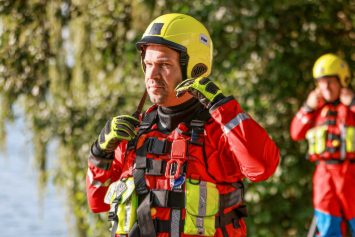The National Fire Protection Association (NFPA) has released Phase One of its first Local Fire Department Wildfire Preparedness and Readiness Capabilities Study. The study takes a look at current preparedness and readiness levels of local wildland/urban interface (WUI) fire departments that have experienced a significant wildfire event in recent years, and identifies the most important elements in a WUI fire protection program, including response and community risk reduction efforts. The study also highlights how fire departments have overcome barriers and have adapted to risk given their available resources.
To maximize the survey’s impact, NFPA collaborated with the International Association of Fire Chiefs (IAFC) in addition to the U.S. Forest Service Northern Research Division, Bentley University and Brandeis University to collectively identify what questions needed to be asked in the survey, and to ensure that it accurately describes the needs of local WUI fire departments throughout the United States.
The study included telephone interviews with fire chiefs and senior fire officers from local fire departments who had experienced a major wildfire within the last five years, and looked at key themes including equipment, dispatch protocols, training, communicating with the public, community risk reduction efforts, relationship building, and cooperation.
Key findings include:
- WUI/Wildland Fire Equipment: Departments often manage budgetary limitations by choosing apparatus that could be used for a variety of different purposes, and by strategic dispatching to maximize the effectiveness of the resources they have.
- Training: Urban, rural and volunteer fire departments increasingly co-manage fire in the WUI. Wildland firefighter training, although separate from traditional (structural) firefighting training, is increasingly sought after for the modern fire department.
- Communicating with the Public: Access to social media, the internet and cell phones in rural areas is often limited, making communication between residents and fire departments increasingly challenging.
- Community Risk Reduction Efforts: While homeowners in some communities rely too heavily on fire departments to take charge of fuel reduction projects, others want little to no involvement from outside agencies when it comes to managing the vegetation on their private property. This makes it difficult for departments to engage homeowners in collaborative mitigation efforts.
- Relationship Building and Cooperation: Inadequate funding and personnel dedicated to mitigation planning and implementation is an issue for some departments. Lack of involvement in national preventative programs like Firewise and Fire Adapted Communities, which provide an avenue for state and federal grants, educational materials and learning networks, is another likely impediment to relationship building and cooperative planning.
The data collected will inform research groups such as the Fire Protection Research Foundation and benefit NFPA’s technical committees that work on standards related to wildfire including NFPA 1901, Standard for Automotive Fire Apparatus, NFPA 1906, Standard for Wildland Fire Apparatus, NFPA 1051, Standard for Wildland Firefighter Professional Qualifications and NFPA 1142, Standard for Wildland Fire Management.
A second phase of the study is currently underway and will take a closer look at the data collected in Phase One. The Phase Two study will also focus on additional themes such as firefighter health and fitness, situational awareness, and all-volunteer fire departments. In addition, researchers will take a comprehensive look at the similarities and differences between fire departments in the eastern and western U.S., and their approach to wildfire. The findings from the Phase Two study will be available in Summer 2016.










